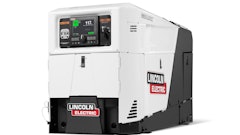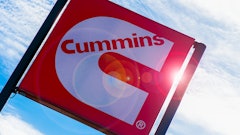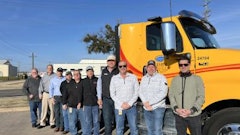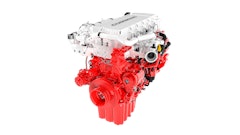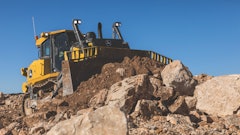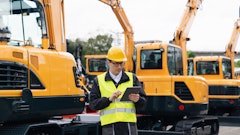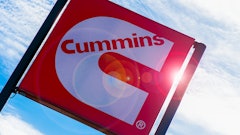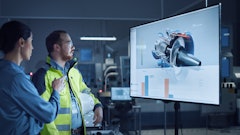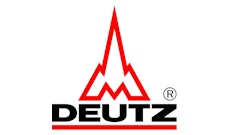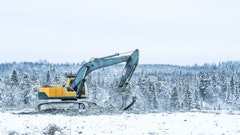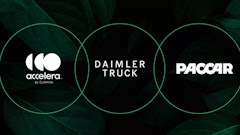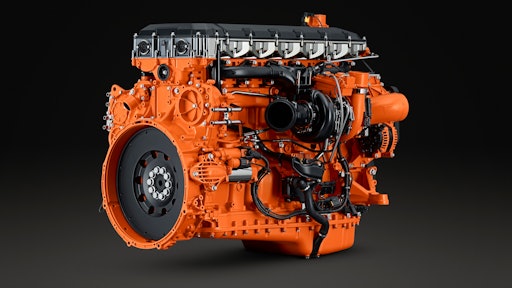
As the mobile equipment industry continues to explore alternatives to traditional powertrain options, the internal combustion engine (ICE) remains a core product offering for many original equipment manufacturers (OEMs). To discuss the ways in which this classic engine is evolving, OEM Off-Highway spoke with Henrik Nilsson, director product management at Scania, Power Solutions. Operating in over 100 countries, transport solutions provider Scania is increasing its focus on sustainable transport systems. In 2023, the company delivered 91,652 trucks, 5,075 buses as well as 13,871 industrial and marine power systems to customers across the globe. Founded in 1891, Scania continues to invest in the research and development of new engine platforms and believes the internal combustion engine will be a staple for years into the future. Read on for Nilsson’s insights.
1. How has the equipment electrification trend affected the future of internal combustion engines platforms in mobile off-highway equipment?
Nilsson: First of all, we see great interest and potential in electrification of mobile off-highway equipment, which is why we are investing in modular hybrid and fully battery electric power solutions. At the same time, we are launching our next-generation inline internal combustion engine platform, pushing the limits of performance, reliability and fuel efficiency. We truly believe that the internal combustion engine plays an important role in powering off-highway equipment for years to come, and improving its fuel efficiency will be crucial in combination with the implementation of electrification to meet the demands of more energy efficient equipment and to reduce CO2 emissions.
2. How have you seen the balance shift regarding ICE versus EV? Will ICE still be a player in 10 years? 20 years?
Nilsson: In the power range in which we offer our combustion engines, there is great interest from equipment manufacturers in learning more about electrification in general and in specific niches there is a more concrete demand already here and now. As an example of this, we currently have a hybrid solution project in an airport firefighting vehicle. With that said, we believe that the combustion engine still will play a key role in the mentioned time period, although with more focus on the combination with electrification solutions and on alternative fuels. Again, this is why we are investing in our next generation inline engine platform, to enable real CO2 emission reductions, lower operating cost and better performance in off-highway equipment already now.
3. What are the market opportunities for ICE moving forward? Conversely, what are the limitations?
Nilsson: There is a lot to be done when it comes to optimizing combustion engine-powered off-highway equipment now and moving forward and we see great market opportunity in that. We believe in electrification of off-highway equipment, but it will not happen overnight in all types of equipment, which is why we advocate for choosing the most fuel-efficient combustion engine solution here and now. If operated on HVO fuel it is possible to substantially reduce the CO2 footprint with existing technology. The combustion engine technology as such is great in terms of the flexibility it offers both equipment manufacturers and operators, and it is also a technology that can offer market opportunities for many years to come even if it is not with diesel but with alternative green fuels.
4. What are Scania’s goals to support the longevity of its ICE products?
Nilsson: First and foremost, Scania’s purpose is to drive the shift toward a sustainable transport system, creating a world of mobility that is better for business, society and the environment. In this, our approach to sustainable transport rests on three pillars: energy efficiency, renewable fuels and electrification and smart and safe transport. These pillars also apply to our power solutions for off-highway equipment, and they enable us to make our customers’ operations cleaner and more efficient. The next generation inline engine platform is key for the company to meet the science-based targets related to decarbonization that Scania has committed to.
5. How do sustainability and carbon emissions play into this plan?
Nilsson: Sustainability and carbon emissions play a significant part, and there is no doubt that we need to offer solutions that enable significant reductions in carbon emissions. There is nothing stopping equipment manufacturers from starting right now by selecting the most fuel-efficient solutions available and thereby take the first step on the road toward emission-free solutions. In combination with electrified solutions and more sustainable fuels, such as hydrotreated vegetable oil (HVO), the combustion engine can play a significant role.
6. What next-generation offerings are coming down the pipeline from Scania? What makes them stand apart from offerings from other ICE OEMs?
Nilsson: Scania is both here and now, and for the future. With industry-leading fuel efficiency, we have a great starting point. Fuel efficiency is in our DNA and our next-generation inline engine platform is truly the result of this. While offering this here and now, we invest heavily into electrification, and we conduct research within the field of hydrogen combustion engines as well as hydrogen fuel cells.
7. What challenges will ICE manufacturers face in the engine environment of the future?
Nilsson: We are used to a stable environment in terms of diesel being the dominant fuel and in that we have faced the emission legislation challenge, which for sure will continue. However, with the changing technology landscape, we believe that there will be a bigger variation of preferred fuels and technologies depending on industry and equipment type. For example, equipment operating with
high energy demand in rural areas will be challenging to electrify, paving the way for alternative fuel combustion engines. On the other hand, equipment operating with low energy demand in urban areas will be suitable for electrification. To navigate this, still uncertain, future environment will be one of the biggest challenges, making sure we invest in the right technologies at the right time.
8. Are alternative fuels a viable option for the future for ICE products? If so, which ones are currently leading the pack?
Nilsson: Alternative fuels are definitely a viable option for combustion engines. Here and now, all our engines run on HVO, and there is significant savings to be made by switching from diesel. The benefit of HVO is that no changes have to be made to the powertrain, you simply change the fuel and you will get the same performance as with diesel without having to refuel more often. Looking a bit further ahead, hydrogen is an interesting option, although it comes with new challenges such as fuel supply logistics, equipment design changes and changed refueling intervals. Also, for it to be more sustainable than HVO and even diesel, it requires green hydrogen, which at the moment is supplied in very limited quantities. With increasing green electricity supply as a source for green hydrogen, this could however be a game-changer in equipment, which is hard to electrify for reasons mentioned earlier.
9. What’s next for ICE platforms?
Nilsson: Our first step is the launch of our next-generation inline engine platform based on the Scania Super engine for on-highway trucks and adapted for off-highway purposes. The 11- and 13-liter engines are the most advanced combustion engines we have ever built, setting a new standard for performance, reliability and fuel efficiency. We are, for example, increasing power output by 11% and torque by 21% while improving fuel efficiency by up to 7%, compared to our current inline engines. This is an opportunity for OEMs to reduce the carbon footprint substantially here and now by making use of existing technology and infrastructure.
Kathy Wells is editor of OEM Off-Highway magazine.













